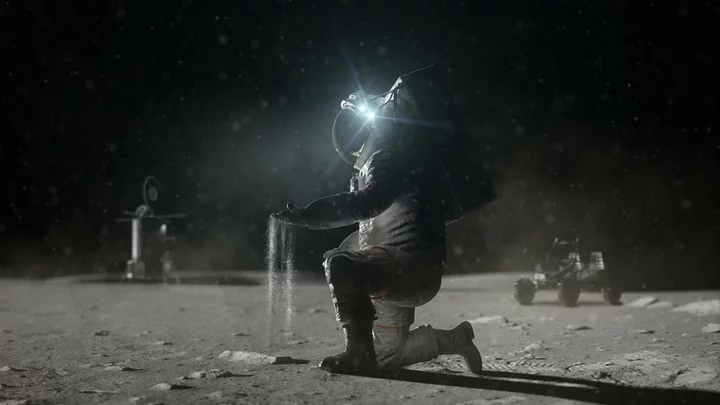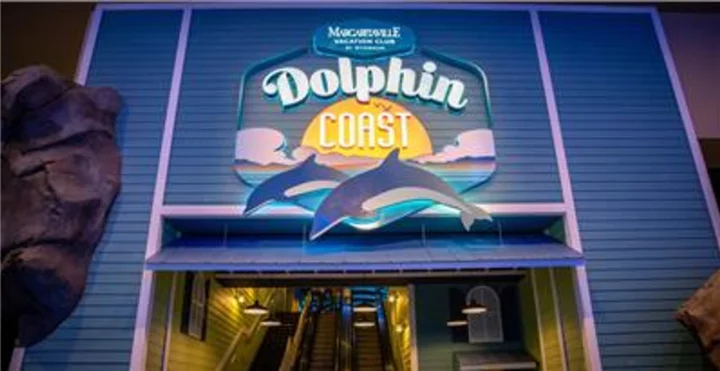At only some 1,600 feet above the moon's surface, Neil Armstrong grabbed control of the Apollo moon lander. The spacecraft's computer had guided the crew to a boulder-strewn field, so the legendary pilot had to quickly steer away. Meanwhile, errant alarms sounded in the module, and a gauge showed they would soon run out of fuel.
Thankfully, Armstrong and Buzz Aldrin touched down, and walked, on the moon in the summer of 1969. In fast succession, five more Apollo missions would land on the lunar surface over the next few years. Now half a century later, NASA aims to soon return astronauts to the moon, potentially as early as 2025. The space agency recently successfully launched its powerful new rocket, the Space Launch System, and in a pivotal test mission, an uncrewed Orion spacecraft orbited the moon before safely returning to Earth.
Yet landing people and robots on the moon still remains a hugely ambitious feat.
"Just because we went there 50 years ago does not make it a trivial endeavor," Csaba Palotai, the program chair of space sciences in the Department of Aerospace, Physics and Space Sciences at the Florida Institute of Technology, told Mashable.
(Just in 2023, for example, an uncrewed Japanese lander and the uncrewed Russian Luna-25 spacecraft crashed on the moon.)
"It is challenging — like a lot of the things we do."NASA has already selected the space exploration company SpaceX to build its first moon lander, and in 2022 asked other companies to propose more landers. Whatever crafts ultimately land on the moon will endure daunting, but surmountable, challenges ahead.
"It is challenging — like a lot of the things we do," Tom Percy, a lead Human Landing System engineer at NASA's Marshall Space Flight Center, told Mashable.
NASA astronaut Buzz Aldrin stands in front of the Apollo 11 Lunar Module in 1969. Credit: NASA / JSC SEE ALSO: How NASA's new megarocket stacks up against its legendary predecessorThe moon has virtually no atmosphere
When spacecraft land on Earth, they use the atmosphere to slow down, as we saw when Space Shuttles and Apollo capsules returned. But the moon's atmosphere is extremely thin, comparable to the far outskirts of Earth's atmosphere, where the International Space Station orbits. This means that slowing down is dependent on firing out bounties of propellent.
"There's no atmosphere, so we cannot float down," Palotai explained. "There's nothing slowing you down except your engine."
Crucially, this gives astronauts smaller margins for error. Propellant is limited. NASA does provide enough fuel to tackle unexpected things — like a crucial flight correction — said Percy. But the mission, generally, can't afford any major mishaps.
"It's literally a one-shot thing," Palotai said.
An artist's conception of an Artemis astronaut stepping onto the lunar surface. Credit: NASANo GPS on the moon
On Earth, aircraft rely on GPS, the U.S. government-run satellite navigation system, to provide precise landing coordinates as planes and other craft move through the sky. But there's no such satellite network encircling the moon.
"GPS doesn't work at the moon," said NASA's Percy.
So NASA must still generally navigate like they did during the Apollo missions over fifty years ago. They'll rely on the lunar lander's computers to calculate how the spacecraft must fire thrusters to stay on course for a specific landing spot on the moon. Importantly, astronauts will have the ability to take control of the craft, like Neil Armstrong did, if the system makes an error.
But today's astronauts will have significantly more help as they make their final approach. This modern technology, called "terrain relative navigation," uses a camera to map the ground during the descent. It will ensure astronauts are headed to the right place, and help the lander avoid any craters or boulders.
Accidentally landing on a boulder could be catastrophic. "There's a pretty good chance you're going to have a bad day," said Percy.
An example, from an aerial view of the Mohave Desert, of how NASA's lunar "terrain relative navigation" will work. The technology matches camera images to known satellite images of the lunar surface. Credit: Draper / NASAThe lunar south pole is a strange, shadowy place
Apollo astronauts landed on the bright, sunlit side of the moon. But for NASA's new moon endeavors, a mission called Artemis, astronauts will land inside a crater at the lunar south pole. Planetary scientists suspect ice and other valuable resources are found in this profoundly cold, dark region.
There, the sun never passes overhead. It's always near the horizon, and can cast long shadows over the ground. These shadows will warp the view of what's below during a landing. "The long shadows make it difficult to discern what the surface looks like," noted Percy. "That's especially challenging when you're trying to land."
"It's going to be a very different environment than what astronauts experienced with Apollo," Percy added.
In preparation for astronaut training, divers at NASA's Johnson Space Center simulate the dark environments in the lunar south pole.. Credit: NASA / Johnson Space CenterNASA astronauts have walked and driven on the moon. But that was long ago. Our journey to, and exploration on, the moon is still in its early stages. After all, NASA plans to colonize our chalky, cratered satellite. "We're still in the infancy of exploring the moon," said Palotai.
"We're still in the infancy of exploring the moon."So landing on shadowy ground, without GPS or the help of an atmosphere, isn't simple. But the space agency is preparing for a continual procession of annual moon landings, starting around 2027. These endeavors, starting with a thundering blast-off from the Florida coast, will undoubtedly captivate the world, like the successful Apollo missions.
"Apollo inspired a generation of people to do something in science," marveled Palotai. "I think this will have a similar boost."
This article has been updated with information about recent moon landing attempts.









